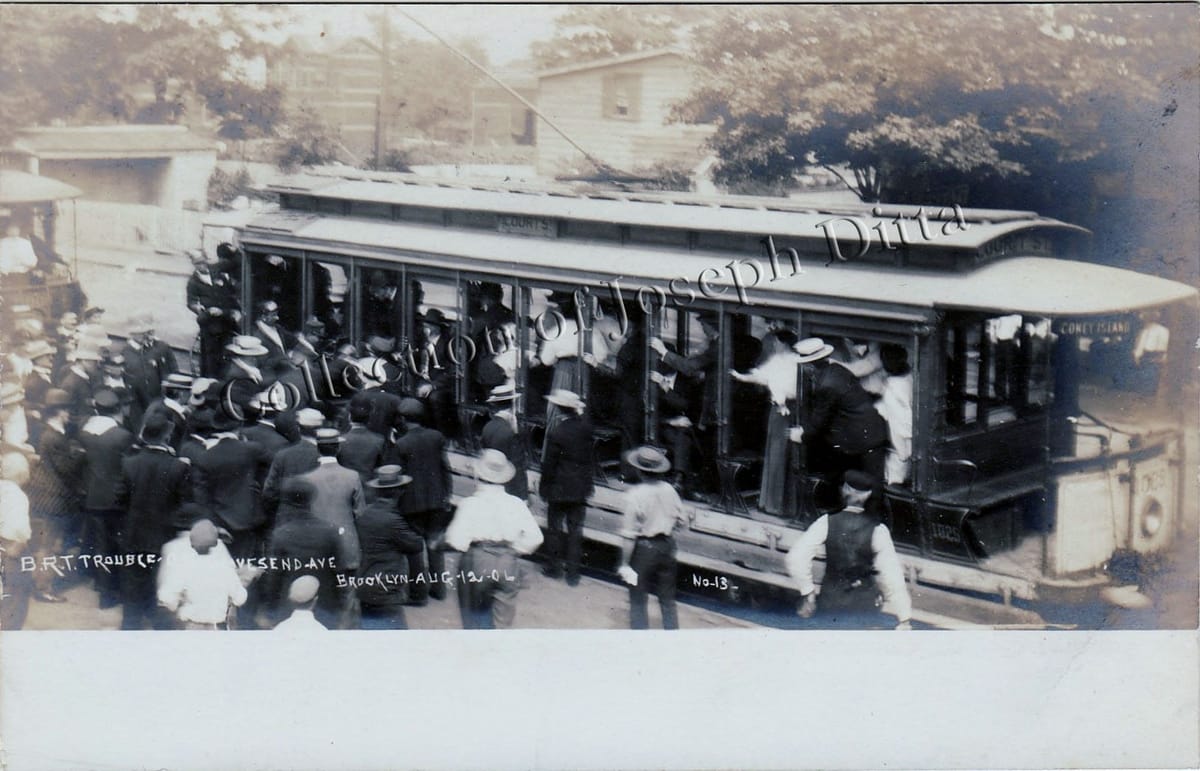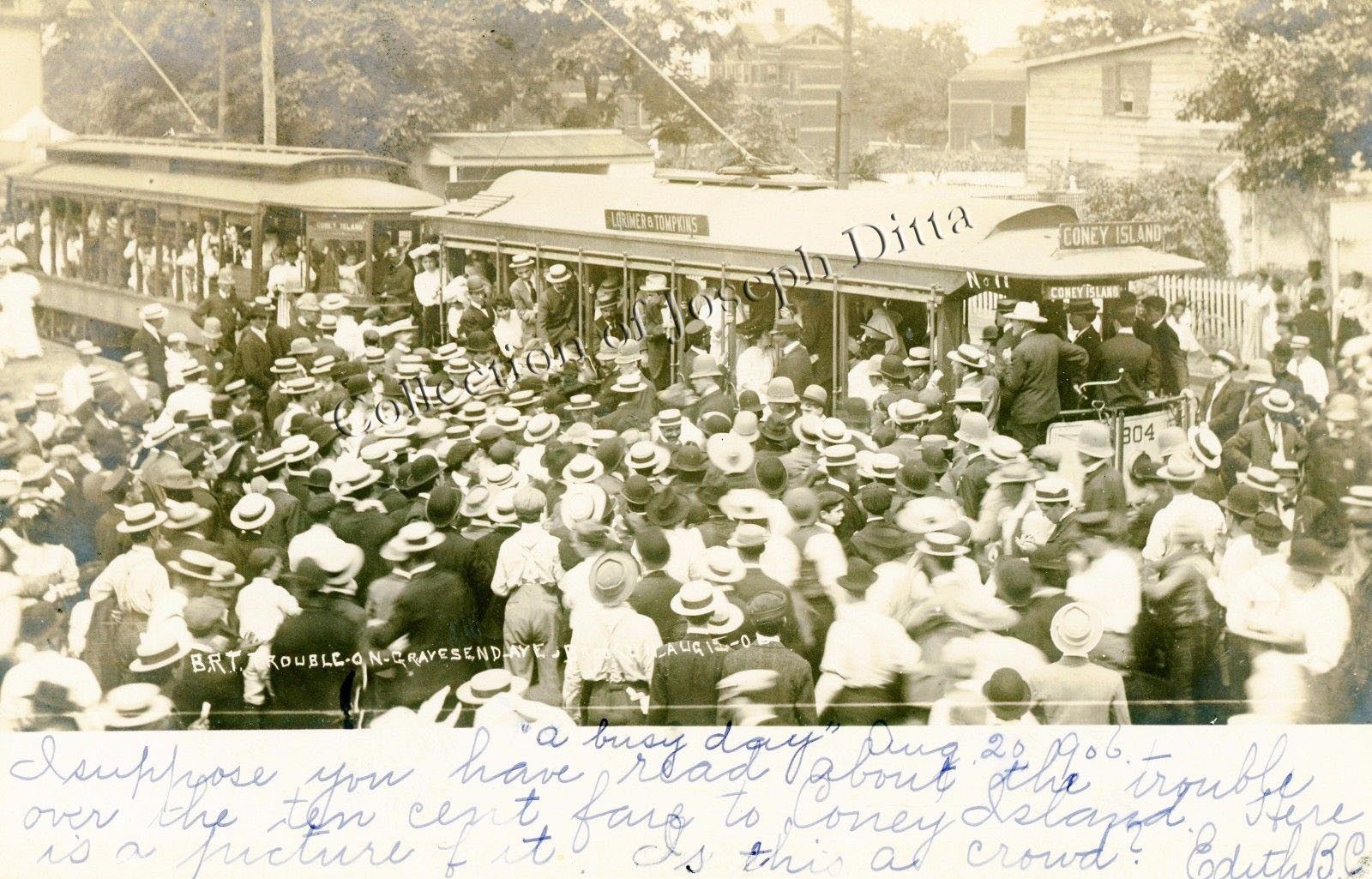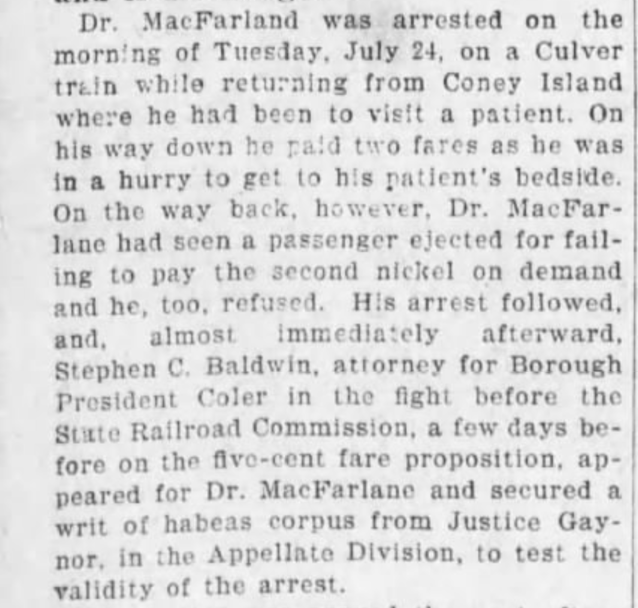This Week In Brooklyn History: BRT Trouble In August 1906


August 12 was a Sunday in 1906. It was the day after a Justice ruled the Brooklyn Rapid Transit Company (BRT) can only charge a 5 cents fare per two rides, a half decrease from the original 10 cents riders had to pay.
“A street railroad company may charge only one fare for a continuous ride from one point to another over its tracks from any city or village, including the tracks of any railroad so leased or controlled by it,” Justice Gaynor ruled.
This ruling came after a passenger, Dr. Thomas J. MacFarlane, “refused to pay more than 5 cents for a ride from Coney Island,” Brooklyn Daily Eagle reported at the time:

MacFarlane was then arrested, but was discharged after Gaynor ruled that he should have the right to refuse to pay a second fare.

10 cents in 1906 is the equivalent of $2.59 in 2017. And 5 cents is the equivalent of $1.29, according to an inflation calculator.
On August 12, 1906, the BRT decided to ignore the ruling. BRT still demanded the extra five cents from straphangers “once they passed Kings Highway on the various lines it controlled: the Sea Beach Railway (today’s N train), the Brighton Line (the B and Q), and Culver Line (The F).” the Gravesend Gazette writes.
It became so intense, that the BRT put out its cops at Kings Highway– where conductors stopped to collect the second fare– to eject any and every passenger that refused to pay the extra nickel.
Hundreds of Brooklynites refused to pay the second fare, and swarmed out on the tracks after being ejected out of the train, causing the train cars to stop moving.
For almost a week the story lead The Brooklyn Eagle’s front page that August, until the news of an earthquake destroying Valparaiso in Chile dominated the paper on August 17th, 1906.



